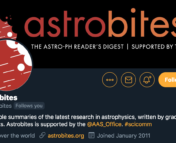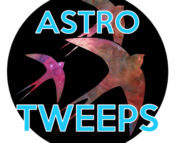Have you ever started a project that seemed insurmountable when you began, but in the end you found a way? Do you love astronomy outreach, planets, and all things space? Well, then, today’s post might be for you!
In 2018, I was a second-year graduate student at CU Boulder teaching an undergraduate astronomy lab. For the lab, students were tasked with trekking the original Colorado Scale Model Solar System (CSMSS; Figure 1). Their objective? To comprehend the relative distances between celestial bodies in our Solar System. To do so, they counted steps between the model planets, multiplied the distances they traveled by 10 billion, and saw for themselves that these values actually correspond to the true distances of the planets from the Sun.
Figure 1: The original Colorado Scale Model Solar System at CU Boulder. Installed in 1987.
For context, the model sun (about the size of a grapefruit) resides outside the University’s Fiske Planetarium and marks the beginning of the shrunken Solar System. About 20 steps away, lies the model Earth – roughly the size of the tip of a ballpoint pen. Further, about 100 steps from the model Sun (past the model’s asteroid belt stanchion) is the first gas giant, Jupiter – about the size of a small grape. The scale model continues for about a third of a mile before reaching the “dwarf planet” Pluto.
What a simple task, to count paces between minuscule imaginary planetary orbs. However, from such a simple exercise comes the profound opportunity to manifest a sliver of insight into the vast distances of the cosmos.
It was after lab that day that I slowly meandered back to my office. I reduced my tempo and began to slowly inspect each model planet myself. I meticulously analyzed each planetary stanchion. I couldn’t help but observe the rough, and weathered, condition of the plaques. Cracks crawled along edges. Bases were hollowed-out from vehicle collisions. The text was fading on most plaques. Pluto was STILL a planet…
The idea manifested that day. CU Boulder’s campus hosts a state-of-the-art planetarium (Fiske) and an impressive observatory (Sommers Bausch); multi-million dollar astronomical investments. Surely, there was a budget somewhere to improve this model, no?
So I began to dig. First with the lead instructor of the lab I was teaching. Then with the Planetarium director at the time. One contact led to another, and another, and yet another. The urge to uncover a solution sprawled like flames. Yet, as it turned out, there was no available budget and very few people I contacted had concrete answers.
I knew early that this path would be winding, and I would need to further extend my reach. I eventually contacted Dr. John Keller and Dr. Seth Hornstein, the current directors of Fiske Planetarium and Sommer’s Bausch Observatory at CU Boulder. Then, my proposal to update the model found its way to the pioneer of the existing model, Dr. Jeff Bennett, who was coincidentally also a CU Boulder graduate student at the time he led the efforts to build the original CSMSS.
Dr. Bennett provided the traction and interest we desperately needed (as well as the seed funding). Further, his insight helped us realize that we didn’t just need renovations, we needed an entire model upgrade (due to the custom build of the original model and the cost of replacement parts). With his spark, a tangible plan was beginning to form and the committee to upgrade the existing model was coalescing. Dr. Keller, Dr. Hornstein, Dr. Bennett, and I hit the ground running. [The key takeaway here is that if I stopped searching for solutions after a few dead ends, I would not have stumbled upon Dr. Bennett.]
First, we sought university guidance and support for bringing a new model to campus. We needed to ensure that we could logistically pull this off and that we had the stamp of approval from CU Boulder’s leadership. Then, we had to consider a few things. Did we have a construction crew? A timeline for install? What was the fundraising target and did we have a list of target donors? Were we sure we had the right model to replace the original? The meetings were long and continuous. However, these critical questions guided the next steps.
To start, we knew that we didn’t want to tamper with the fundamental aspects of the original model. So, we elected to keep the scale at 1:10 billion. Next, we made the biggest decision of the project and decided to become the first institution in the world to install the Voyage Mark II (VMII; Figure 2) model from the National Center for Earth and Space Science Education. This was due to the success of the Voyage Mark I, particularly with its popularity on the National Mall in Washington D.C., the potential notoriety of being the first institution with a VMII, and the direct connection that Dr. Bennett had with the vendor.
Another major topic of discussion was the fact that the original CSMSS was originally built in 1987 to serve as a memorial for CU Boulder alumnus, Ellison S. Onizuka, a member of the fallen astronaut crew aboard the Space Shuttle Challenger (January 28, 1986). We wanted to preserve that. So we decided to do so, then went a step further and chose to extend the memorial to honor the fallen Space Shuttle Columbia crew (February 1, 2003), and specifically the CU Boulder alumna aboard Columbia, Dr. Kalpana Chawla.
Figure 2: Example of a mock Voyage Mark II Exhibit.
Next, we pondered additional upgrades to the model that would make it even more compelling, beyond just the physical exhibit itself. To that aim, Dr. Keller connected with Dr. Teri Reub (Department Chair of CU Boulder’s College of Media, Communication, and Information) about building an engaging mobile application to pair with the new exhibit.
With the mobile application, we calculated that we would need a little over $110,000 to pull this off! Nonetheless, we were not deterred and shifted all of our efforts into fundraising once we settled on the logistics, design, and plan for execution. We wrote department proposals, sought contributions from the public, and eventually reached out to larger STEM institutions in Boulder. While the majority of our requests were denied, we still made traction by slowly building a network of investors. With each setback we faced, we kept the wheel churning, and over 3 long years, we ended up receiving contributions from the University’s Office of the Provost Grand Challenge, Office of the Chancellor, Laboratory for Atmospheric and Space Physics, Department of Astrophysical and Planetary Science, Department of Aeronautical Engineering, Dr. Jeff Bennett himself, and individual donors. Then… finally, the day came that we achieved our fundraising goal!
Our efforts paid off and we were able to acquire the new model in 2021 (Figure 3). In the process, 11 additional communities have committed to their very own VMII, with 40+ expressing interest. Furthermore, the mobile application that pairs with the model, “Wanderers CU”, is now in the Apple App Store. Wanderers CU provides an in-depth sound experience that responds to a visitor’s movement throughout the model, as sensed by GPS. Within the application, the relative mass and orbital period of the planets in the model are expressed sonically, with each celestial body having a unique sound profile. As the mobile listener journeys throughout the planets, the user hears a dynamic soundscape where the volume and direction of the sounds change depending on the participant’s position and perspective.
Figure 3: Ribbon Cutting Event with CU Boulder’s Chancellor Phil DiStefano and myself.
Beyond the static pages of textbooks, members of the public and students from the elementary to the graduate level will now have the opportunity to walk the new model at CU Boulder, crystallizing an intimate understanding of the cosmic distances in our universe. It is my hope that they are able to bring the wonder of astronomy to life.
If you’re thinking about taking on a large project yourself, my advice would be to stay persistent, ensure you assemble the right team, continuously seek solutions, and don’t give up – even when things look bleak!





Good one on the staying power
Congrats James on success with this rehab. As a 1980s colleague of Jeff Bennett, he and the SMSS have long been a source of inspiration in my post-Boulder years.
Thank you, Bob! It was an honor to work with Jeff on this project.
Thank you for this information.